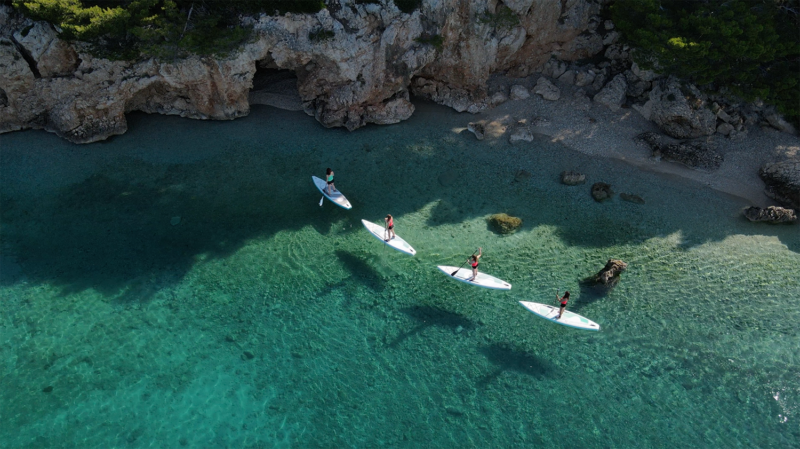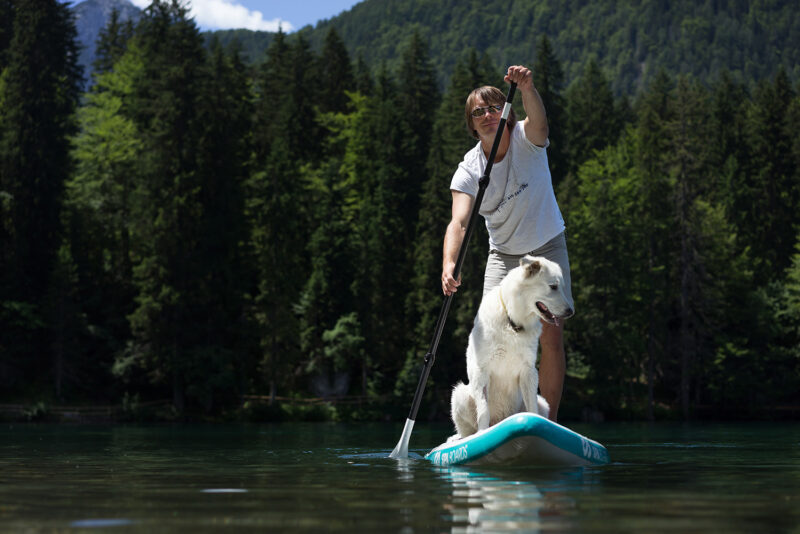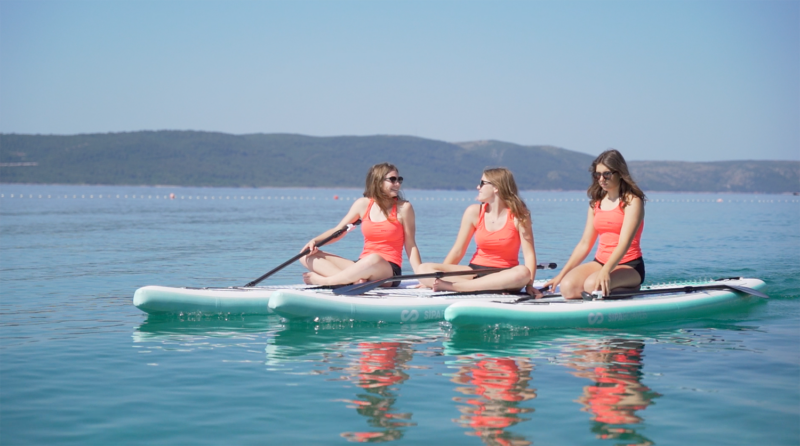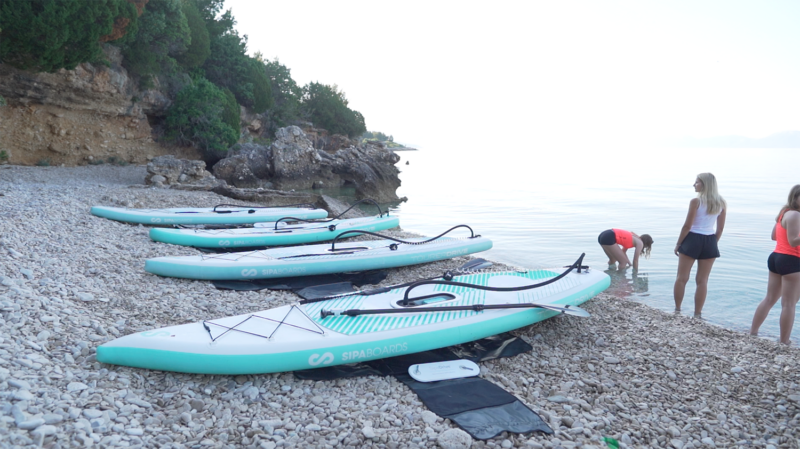
Summer sports
Paddleboarders, Start Your Engines!
Fully charged and ready to go: electric jet motors allow stand-up paddleboards to go the extra mile—or 20.
Paddleboarding can be one of two things: a glorious way to enjoy nature while getting a full body workout, or a reminder that humans are awkward land mammals who balance on something the width of a bath mat at their own peril.
Clearly the lovers of paddleboarding are winning out, as the hobby has exploded into one of America’s most popular maritime hobbies. For those who are athletic: rent a board and a paddle and after five minutes wobbling, you’ve got the hang of it and can float around in the sun. For the rest of us: enjoy the wet.
But the sport has just got an upgrade thanks to SipaBoards, a Slovenian company that has strapped a motor to the underside of their boards to give users an extra boost. As with motorized scooters, bikes, and skateboards, reactions to the development have varied from “Why do we need these?” to “These are what I’ve been waiting for!” It is certainly the latest in a long string of evolutions to the sport.

Paddleboarding is, after all, thousands of years old, with our ancestors from around the world standing on canoes and logs as they traversed waterways for scouting, hunting, and transportation.
From the 1940s to the 1960s, modern-day stand-up paddleboards (or SUPS) were used primarily to help photographers take pictures of surfers. In 2000, the sport was brought to mainland America. By 2011, 1.15 million people were paddleboarding each year in the US, most just for fun. By 2021, that number had tripled to 3.74 million, and it continues to rise.
SipaBoards CEO and founder Sebastjan Sitar attributes the explosion in popularity to several reasons. “It’s a highly efficient exercise that has one of the lowest injury possibilities in all sports,” he said. “And you’re discovering nature in a brand new way.”


It seems inevitable that if something can be motorized, it will be. (Though: where are our jetpacks? We’re all still waiting.) But the creation of SipaBoards actually came out of a concern for safety rather than a desire for—cue the Tim “The Tool Man” Taylor voice—more power.
On a Croatian vacation with his family, Sitar was paddleboarding with his wife and daughter on a bay when they were swept out by the tide. Their battle against the current to return to land proved to be the “eureka” moment for Sitar, who realized a motor could be lifesaving, especially for amateur SUP users who aren’t acutely aware of tides and currents.
His new SUPS are equipped with a motor that allows the user to travel at speeds up to 4.3mph working off a six-hour battery life. Weighing around 30 pounds, the boards are self-inflatable, and easily fit into a backpack for convenient travel. They’re equipped with LED lights for night time and, with a remote control switch on the paddle, it’s easy for riders to paddle when they want a workout, speed up when they need to or use a combination of both.


SipaBoards are also a great way to explore with your pets. “Dogs love paddleboarding,” says Sitar, “and our boards are designed to accommodate even 90 plus pound good boys. Once your dog gets a grip, they will love it.”
While the prices, which fall in the $3,000–$4,000 range, are much steeper than your typical paddleboard (which often retail around $500), the company argues: a price can’t be set on safety and peace of mind.
Perhaps the most exciting thing about the SipaBoards, though, is how they create new adventures. Unless you have the arm strength of She-Hulk, the distance you can travel on a SUP is limited. But with six hours of power behind you, you can cover miles in directions previously unexplored. So next time you’re on a beach vacation, consider a e-board: Paddle out, cut motor. Enjoy silence.
Hero photo courtesy of SipaBoards



